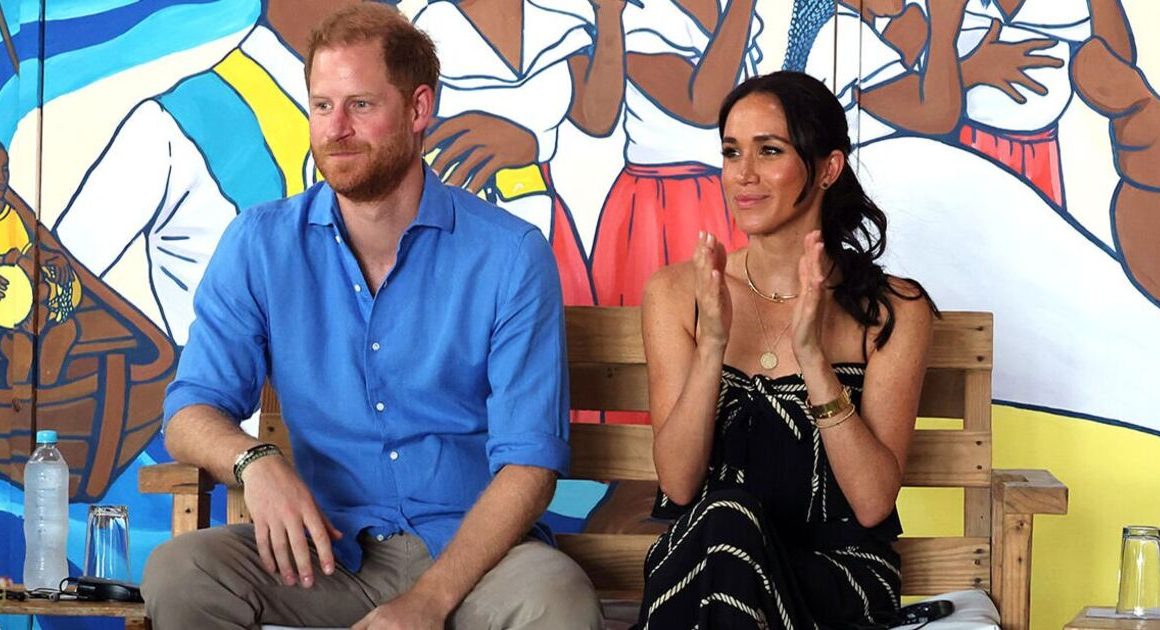Muhammad Abu Ghalban hammers away at two pieces of wood. The 25-year-old is in the Nemsawi cemetery in central Gaza, trying to build a shelter for his wife and three kids.
The cemetery sits near the Nasser Medical Complex in Khan Younis. The air is quieter in this part of town, the only sounds of the war are the drones buzzing above. And, after being turned away from hospitals and schools, it’s Abu Ghalban’s last resort for his family, sheltering among the dead.
“We couldn’t find a place to stay,” Abu Ghalban told CBC freelance videographer Mohamed El Saife. “We didn’t know where to go.
“We didn’t find anything other than the cemetery that is a safe place to leave our women and children.”
Overcrowding in shelters has become a “pressing issue” in Gaza amid the ongoing Israel-Hamas war, according to a May report from the Internal Displacement Monitoring Center (IDMC), with some facilities exceeding their intended capacity “fourfold.”
There were 1.7 million internally displaced people in Gaza as of Dec. 31, representing 83 per cent of the strip’s population, following Israeli military orders to evacuate from where they lived. Among them are people like Abu Ghalban and his family, attempting to dodge the dangers of the war.
‘No safe place in Gaza’
Israel’s stated goals for the war are to recover its hostages and to destroy Hamas and its ability to govern, after the group led the Oct. 7 attack on the country that killed 1,200 and took 250 hostage, according to Israeli figures. It says it does not deliberately target civilians, but that Hamas operatives embed themselves in civilian infrastructure, using people as human shields. Hamas has denied those claims.
Muhammad Abu Ghalban says he’s building a shelter in a cemetery in Gaza because every hospital and school he went to was overcrowded. Duaa Abu Jamae says after being displaced from her home that was bombed, she found no place to go other than the street.
Topping the list of the country’s Hamas targets is Yahya Sinwar, who as the leader of the group in Gaza is seen as the “mastermind” behind Oct. 7. On Tuesday, Sinwar was named the leader of Hamas’s political bureau, after Ismail Haniyeh was killed last week in Tehran, in a presumed Israeli strike.
The Israel Defence Forces (IDF) say they have focused the fighting in areas where Hamas’s military operations were concentrated. In the beginning of the war, that was in the northern part of Gaza, and the military called on Palestinian civilians in the region to evacuate and make their way south.
Months later, the IDF split the strip into three, declaring parts of central Gaza and Rafah “safe zones,” although many have said that such zones have also ended up being bombed. It has since amended some of the safe-zone boundaries, citing “significant terrorist activity and rocket fire” from certain areas. The military has also returned to northern Gaza, after previously saying it had cleared Hamas’s presence there.
In all, the war has created a situation where there’s “no safe place in Gaza” for civilians, according to the United Nations Human Rights Office. The office noted in July that the continuous mass evacuation orders are confusing, and the intensity of the attacks on areas through which civilians are moving puts them in more danger.
Many in Gaza are living in makeshift tents in squalid conditions, reporting the spread of diseases and poor hygiene, amid the chaos of multiple displacements.
Israel has stood by its efforts to warn civilians to evacuate before bombing begins, by dropping leaflets on neighbourhoods the military plans on targeting.
Its ground and air incursion on Gaza has killed 39,000 since October, according to the Gaza Health Ministry.
Exhaustion after multiple displacements
Near the market in Khan Younis, Duaa Abu Jamae, 27, sits with her children under a tarp stood against the walls of a building. This is her 13th displacement in 10 months.
On July 22, Abu Jamae says bombs came down on her neighbourhood, and they fled with nothing but the clothes on their backs.
“We started walking and going where people were going,” she said. “[And] from exhaustion, we stayed in this place…. It’s been three days.”

She sits with other families on mats on the stairs, their belongings piled up against the walls of the building behind them. Their only refuge is the metal sheets above their heads.
“Some people bring us food and water,” she said. “We’re sleeping in the streets.”
And at the cemetery, friends continue to help put together Abu Ghalban’s shelter. He says this is but one of the many times he’s been displaced since the war began.

“It’s not a good feeling,” he said. “Exhaustion and suffering … there’s no proper water.
“Life is not very good.”
He goes off to help pull the tarp over the wood structure that was built, between rubble and tombstones. This will be home, until the next displacement.
Night will soon set on the Abu Ghalban family. The children have taken to playing among the graves. The day’s work means he’s provided a roof over his family’s heads — even if it’s just nylon.











